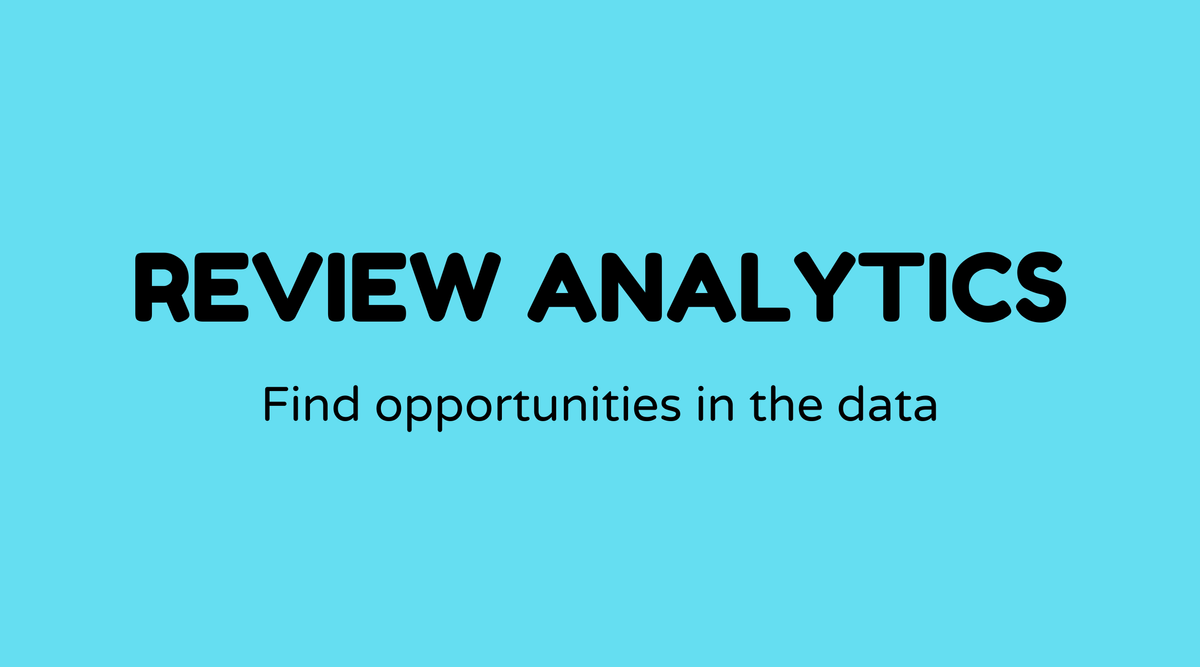Review analytics

Overview of Review Analytics:
In the current business landscape, grasping customer feedback through review analytics is highly beneficial. Imagine being able to analyze every comment about your product, identify what consumers appreciate, and recognize what needs improvement. That's the power of review analytics. This process involves evaluating customer reviews to extract valuable insights that can enhance customer satisfaction and refine your products or services.
Why Reviewing Analytics Matters:
Have you ever wondered why some businesses seem to know how to truly satisfy their customers? It's no coincidence—they utilize review analytics. Examining reviews helps businesses grasp their customers’ preferences, anticipate their needs, and tackle potential issues before they escalate. Thus, incorporating review analytics can improve decision-making, streamline product features, and shape marketing strategies to align more closely with customer wishes.
What does Review Analytics mean:
At its essence, review analytics refers to the investigation and interpretation of customer feedback across various platforms to gain insights about a product or service. The process includes gathering reviews from websites, social media, and other channels, applying data-mining tools to analyze them, and interpreting the findings to inform business strategies. Essentially, it's a method to listen to your customers on a larger scale.
How to Review Analytics:
Review analytics may appear challenging, but it becomes manageable with organized steps:
- Collection of Reviews: Gather customer feedback from diverse sources like e-commerce platforms, social media, and online discussion groups.
- Text Analysis: Employ tools to conduct sentiment analysis and comprehend the general sentiment of customers' reviews.
- Category Sorting: Organize reviews into groups based on subjects like product quality and customer service.
- Visual Representation: Utilize charts and tables to display findings for easier understanding.
- Action Plan Development: Based on insights, create strategies to improve the customer experience and tackle negative feedback.
Examples of Reviewing Analytics:
Various companies and industries have effectively utilized review analytics:
- Retail and E-commerce: Brands like Amazon utilize detailed review analysis to personalize recommendations and adjust inventory levels.
- Hospitality Industry: Hotels assess guest feedback to improve visitor experiences, from room comfort to service quality.
- Tech Companies: Technology firms analyze product-related feedback to develop new features and efficiently address bugs.
FAQs:
What tools can be used for review analytics?
Tools like Google Analytics, HubSpot, and specialized text analysis software are widely used.
How often should businesses conduct review analytics?
The frequency depends on the amount of feedback. Regular analysis—monthly or quarterly—is suggested for effective outcomes.
Can small businesses benefit from review analytics?
Certainly! Small businesses can leverage review insights to compete with larger rivals by aligning products more closely with consumer needs.
How is review analytics different from traditional surveys?
Review analytics involves evaluating organic feedback rather than solicited responses, often offering more genuine and detailed insights.
Are there any limitations to review analytics?
Yes, challenges include managing large volumes of data and ensuring accurate sentiment analysis, especially with sarcasm or nuanced language.
How does sentiment analysis work within review analytics?
Sentiment analysis employs natural language processing to determine the sentiment behind customer feedback—whether it's positive, negative, or neutral.



